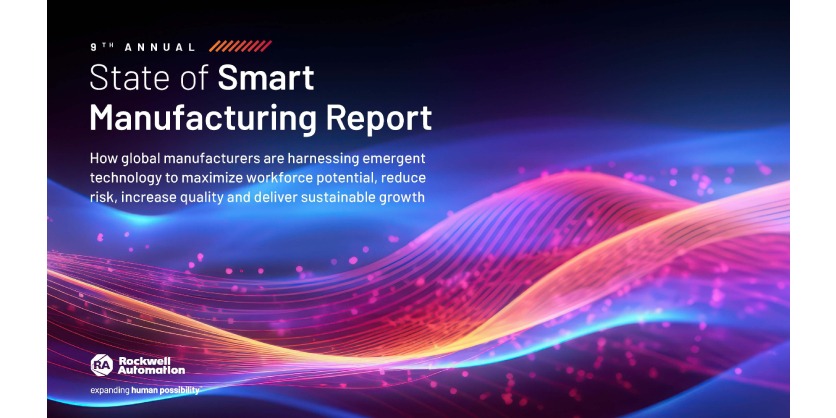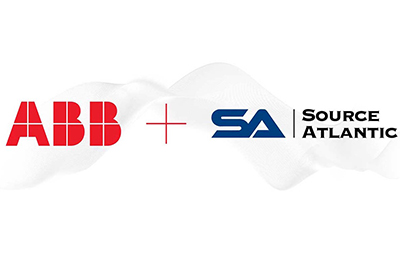New Study Finds GenAI as Top Tech Investment for Manufacturers, While 94% Expect to Maintain or Expand Their Workforce
March 27, 2024

Global State of Smart Manufacturing Report reveals impact of emerging technologies on addressing workforce, quality, cybersecurity, and sustainability challenges
Rockwell Automation, Inc., one of the world’s largest companies dedicated to industrial automation and digital transformation, has announced the results of the 9th annual “State of Smart Manufacturing Report.” The global study surveyed more than 1,500 manufacturers across 17 of the leading manufacturing countries.
This year’s report reveals a focus on harnessing new and emerging technologies to build resiliency, improve quality, maximize workforce potential, and drive sustainable growth.
“A skilled workforce is the cornerstone of any successful manufacturing operation, but attracting, managing and retaining workers is proving to be an ongoing challenge,” said Cyril Perducat, senior vice president and chief technology officer, Rockwell Automation. “The survey found technology alone is not the answer. To remain competitive, manufacturers need to focus their staff on embracing new technology as a core part of their evolving organizational culture, creating a technology/worker partnership that drives their business forward.”
Key global findings include:
- AI ranks as the top capability that manufacturers believe will drive the biggest business outcomes. 83% of manufacturers expect to use generative AI (GenAI) in their operations in 2024.
- 95% of manufacturers are using or evaluating smart manufacturing technology – up from 84% in 2023.
- 94% of manufacturers plan to maintain or grow their workforce due to smart manufacturing technology adoption, with a heavy focus on repurposing workers to new or different roles and/or hiring more workers.
- Change management is the leading workforce-related obstacle for manufacturers in 2024.
- Manufacturers cite “improved quality” as the top positive outcome they hope to achieve from existing smart manufacturing technology for a second consecutive year. Additionally, “quality control” ranks as the #1 AI/Machine Learning use case in 2024.
- For the first time, cybersecurity is listed as one of the top five external risks for manufacturers in 2024, ranking third overall.
- Energy management is the factor that matters most to manufacturers’ sustainability/ESG programs.
“The workforce of 2019 is not coming back,” said Allison Kuhn, principal analyst, LNS Research. “Developing a sustainable workforce strategy is critical to successfully navigate daunting manufacturing challenges. Leaders are winning the war for talent by embracing this new reality and with a laser focus on three imperatives: 1) Total Employee Experience, 2) Servant Leadership, and 3) Connected Frontline Workforce (CFW) Applications.”
Manufacturers continue to face a significant challenge: combining people, processes, and technology to drive long-term business growth and resilience. According to the report, around one-third of manufacturing leaders cite “matching technology and talent to business need” and “effectively managing people and resources” as the biggest obstacles their organizations face over the next year. Manufacturers can overcome this challenge by selecting a partner with relevant industry expertise and experience who can provide tailored solutions and support in aligning technology and talent with business objectives.
“At Rockwell, the combination of our deep industry expertise with our exceptional PartnerNetwork™ puts us in the best position to advise and guide leading global manufacturers. Being the largest company dedicated solely to industrial automation and digital transformation, we strive to help companies realize the promise and value of their digital transformation, no matter where they are in their journey,” said Perducat.
The full findings of the report can be found here.
Methodology
This report analyzed feedback from 1,567 respondents from 17 of the top manufacturing countries with roles from management up to the C-suite and was conducted in association with Rockwell Automation and Sapio Research. The survey pulled from a range of industries including Consumer Packaged Goods, Food & Beverage, Automotive, Semiconductor, Energy, Life Sciences, and more. With a balanced distribution of company sizes with revenues spanning $100 million to over $30 billion, it offers a wide breadth of manufacturing business perspectives.
Related Story
Rockwell Automation to Increase Scale and Scope of AI in Manufacturing with NVIDIA
Manufacturing is a $15-trillion global industry that touches everything humans need to survive and thrive—from clean water to food, life-saving drugs and therapies, sustainable energy, mobility, and more. The company plans to evolve the industry by creating the factory of the future, making it easier for automation customers to digitalize industrial processes. Factories of the future will be characterized by enhanced sensing capabilities with machine vision, accelerated compute capability in control systems, advanced simulations equipped with learning agents, widespread adoption of autonomous mobile robots (AMRs), and generative AI (GenAI) experiences to enhance information retrieval for frontline operators.





